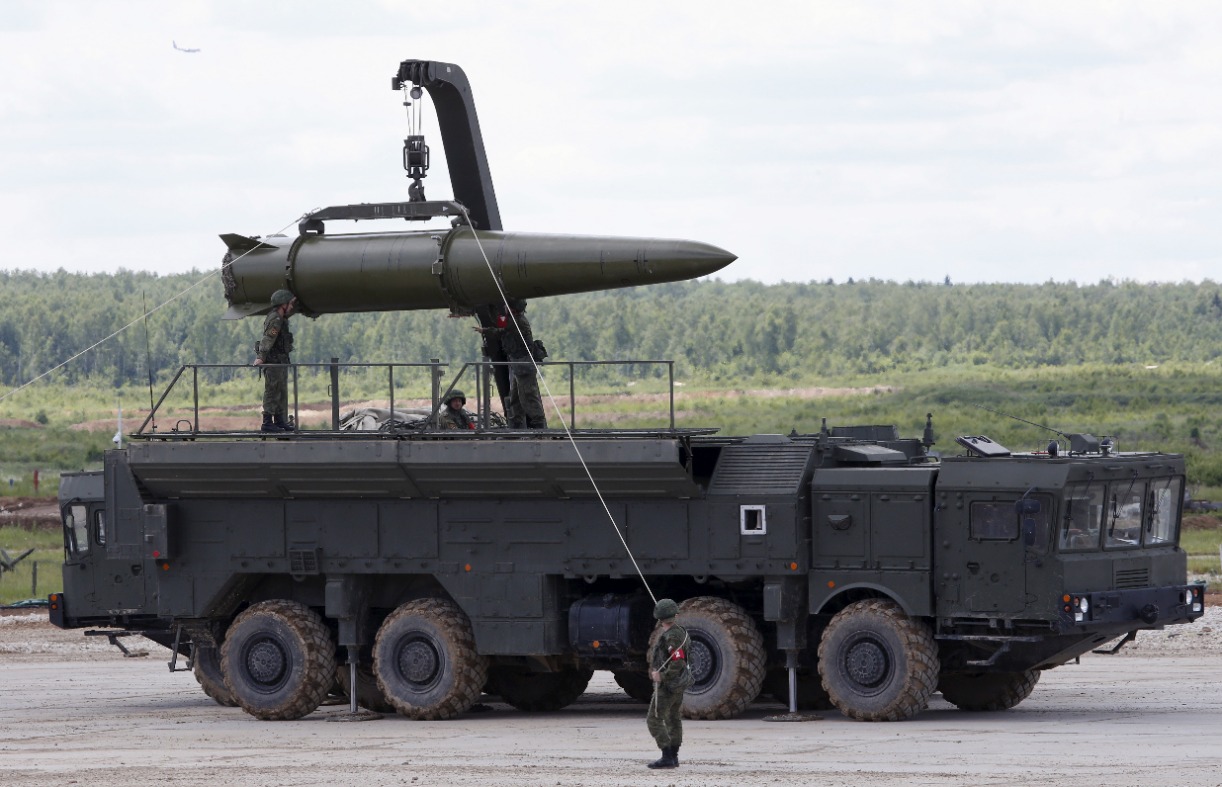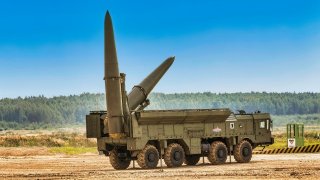Russia’s Powerful Iskander Missile System Is a Threat to NATO
The Russian 9K720 Iskander missile system, known as the SS-26 Stone by NATO, has been a significant concern for U.S. and NATO war planners since its development during the Cold War.
Summary and Key Points: The Russian 9K720 Iskander missile system, known as the SS-26 Stone by NATO, has been a significant concern for U.S. and NATO war planners since its development during the Cold War.
-Designed to counter Western air defense systems, the Iskander can deliver both conventional and nuclear strikes with high accuracy, thanks to advanced guidance systems including Russia's GLONASS GPS.
-The Iskander-M, with a range of up to 310 miles, has been effectively used in conflicts like the Syrian Civil War and the ongoing Ukraine War. Russia continues to upgrade this formidable system, enhancing its precision, range, and speed, making it a critical element of Russia's military strategy.
-Russian missile capabilities gave U.S. and NATO war planners headaches even before the Soviet Union collapsed. Whether using anti-aircraft systems or offensive strike platforms, the Russians have always been proficient at keeping Western militaries on their tactical toes.
Russia’s Iskander Missile: A Cold War Legacy Still Haunting NATO
One system in particular has terrorized the minds of Western analysts and strategists for years. That’s the 9K720 Iskander (NATO designation SS-26 Stone). This is one of Russia’s most advanced mobile short-range ballistic missile programs.
The Russians have shamelessly proliferated this capability throughout the world. Now that the Ukraine War has entered its third year, the Putin regime insists they will continue proliferating such weapons to countries that the United States views as threatening, such as the Islamic Republic of Iran.
The Iskander’s Story
The Iskander’s story begins in the final decade of the Cold War, the 1980s. Back then, the Reds were doing everything in their power to keep up with America’s defense spending spree and innovation surge under President Ronald Reagan. The Iskander was designed in response to rapid developments in Western air defense systems.
An Iskander missile can conduct both conventional strikes as well as nuclear attacks. Thus, the missile is used for deterrence at the strategic level and for operational use at the non-strategic level.
Consisting of two versions, the Iskander-M has a range of up to 310 miles. As mentioned earlier, the Russians have been proliferating this system like crazy over the years. The export model is the Iskander-E. While still a potent system, it has a reduced range. The Iskander-M and Iskander-E are highly accurate systems.
The Iskander has a single-stage solid rocket propellant, and the missile is capable of achieving hypersonic speeds once it hits the atmosphere, too, during its terminal phase. When systems go hypersonic, it can be hard to defend against them.
In February, it was reported that Russia was implementing a rapid upgrade of both their Iskander and Kinzhal systems to improve their precision, range, and speed.
In other words, Moscow was investing in making one of their most lethal strike weapons even more lethal.
Iskander missiles employ advanced guidance systems to make its targeting highly accurate. These guidance systems include inertial navigation capability. The Iskander has optical systems and can use satellite-assisted guidance.
Iskander and GLONASS
As an interesting aside, the Iskander uses the Russian GLONASS global positioning system, the rival to the U.S.-maintained GPS satellite constellation, to aid in guidance. Until the 2008 invasion of Georgia, the Russians actually used the American GPS for their offensive systems. The Americans then cut off Russian access to GPS, prompting Moscow to redouble its own efforts to use its own network.

In 2013, when the Russian armed forces were intervening to support the government of Bashar al-Assad against Islamist militants in the Syrian Civil War, they used the Iskander missile to great effect. It was the ultimate real-world test of the whole Iskander platform, and the Iskander rarely disappointed.
Iskander in the Ukraine War
The Iskander would be put to the ultimate test in Ukraine.
According to Thomas Newdick of The War Zone, the Iskander-M systems deployed in Ukraine “have been using an apparently previously unseen decoy, in an effort to spoof Ukrainian air defenses.” By employing “penetration aids,” or PENAIDs, which are normally associated with longer-range weapons, the Russians are ensuring “that its short-range battlefield ballistic missiles, too, are better able to defeat increasingly sophisticated anti-ballistic missile (ABM) systems” that Ukraine is deploying against Russia.
Moreover, the Russians have moved these systems into their Baltic Sea enclave of Kaliningrad, which rests between Germany and Poland. Their deployment there not only shores up what is otherwise a vulnerable bit of strategic territory in Europe for Russia, but it also sends a clear signal to the European powers about the kind of damage that Russia can do to them if the Ukraine War spirals out of control.
The Iskander missile is one of Russia’s most powerful weapons. First created to respond to the West during the Cold War, it continues to serve the Russian military with a high success rate – so much so that Moscow has authorized a massive upgrade. Western leaders should not underestimate this system.
Author Experience and Expertise: Brandon J. Weichert
Brandon J. Weichert, a National Interest national security analyst, is a former Congressional staffer and geopolitical analyst who is a contributor at The Washington Times, the Asia Times, and The-Pipeline. He is the author of Winning Space: How America Remains a Superpower, Biohacked: China’s Race to Control Life, and The Shadow War: Iran’s Quest for Supremacy. His next book, A Disaster of Our Own Making: How the West Lost Ukraine, is due October 22 from Encounter Books. Weichert can be followed via Twitter @WeTheBrandon.
All images are Creative Commons or Shutterstock.
From the Vault
Russia Freaked Out: Why the U.S. Navy 'Unretired' the Iowa-Class Battleships
Battleship vs. Battlecruiser: Iowa-Class vs. Russia's Kirov-Class (Who Wins?)


